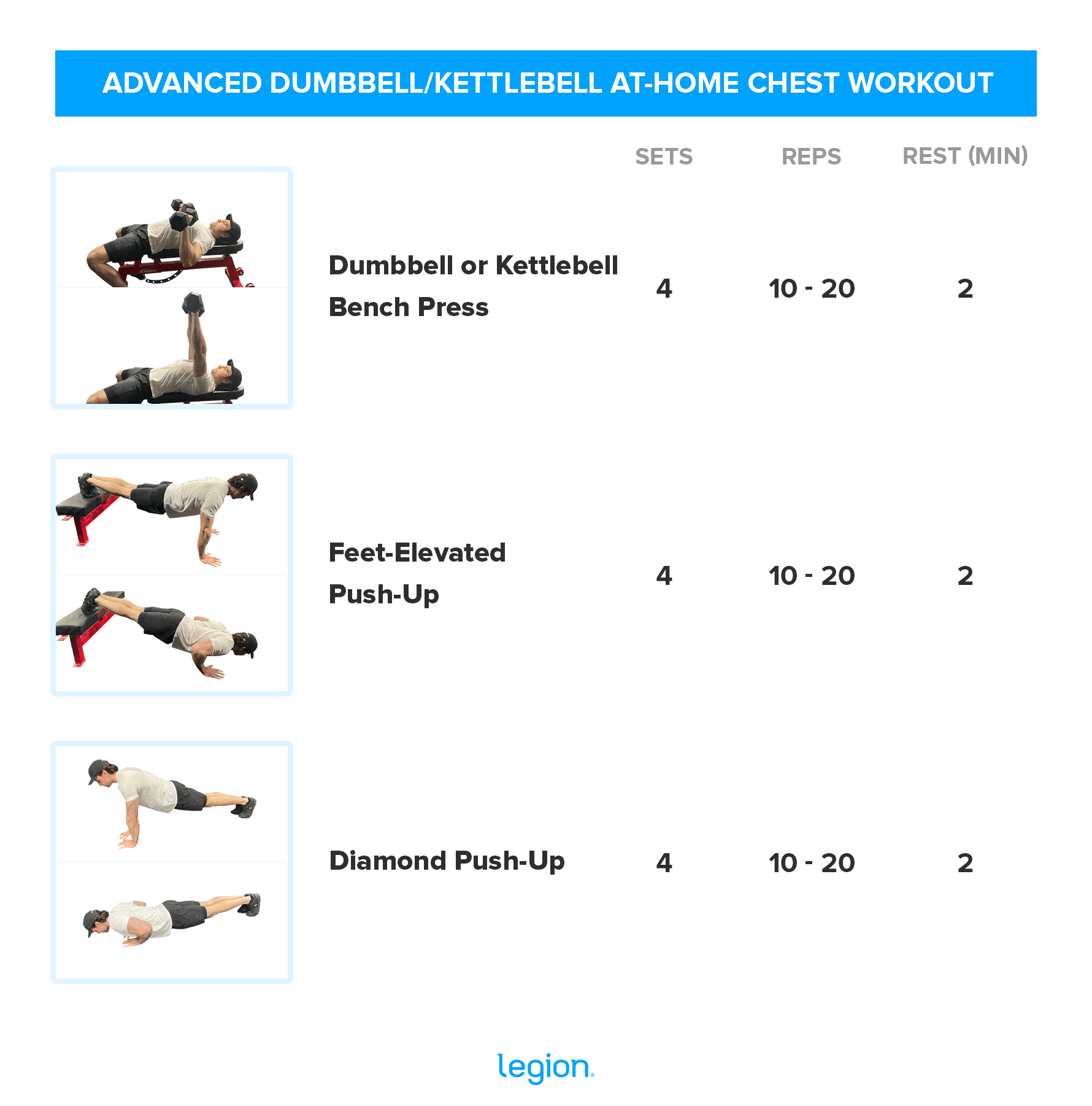

Slowly inhale while bending the arms and leaning the torso forward.Grip the bars, using the arms to push the body up above them.During this exercise, remember to lean slightly forward on the dip to engage the muscles in the lower chest. Parallel-bar dips activate multiple muscle groups in the chest, arms, shoulders, and back. Return to the starting position by slowly lowering the dumbbells while rotating the palms inward.On the exhale, use the muscles in the chest to press the dumbbells up while rotating the palms outward to make the thumbs face each.The dumbbells should be parallel to the body. Lower the dumbbells into the starting position, but this time, keep the palms facing inward.Raise the dumbbells over the chest with the arms extended toward the ceiling, keeping the hands in the same position.Rest the dumbbells on the thighs with the palms facing inward. Lie down on the decline bench with one dumbbell in each hand.It is slightly more complex than a traditional dumbbell press, so people trying this move for the first time might want to use lighter weights until they feel comfortable with the movement. This move is a variation of the last exercise. Decline dumbbell bench press with external rotation Slowly lower the dumbbells to return to the starting position.Squeeze at the top of the lift and hold for 1–2 seconds. On the exhale, use the chest muscles to push the dumbbells up.The dumbbells should be on the outer edges of the chest. To begin, bend the arms to form a 90-degree angle at the elbow.Hold the dumbbells shoulder-width apart and rotate the wrists until the palms are facing away.

Raise the dumbbells over the chest, extending the arms toward the ceiling.Set the decline bench at a 45-degree angle, and lie down on it with one dumbbell in each hand.Using a barbell will allow people to lift heavier weights for fewer reps, but dumbbells allow a greater range of motion, which may be a better option for people who want to target their lower chest.

The instructions for this exercise call for dumbbells, but people can use a barbell instead. This article describes five exercises that help people gain strength and definition in the lower chest. One set of 8 to 12 repetitions (reps) is effective in resistance training, but 2 or 3 sets may be more effective. It is possible to target specific areas of the chest by using modified lifts.Īccording to the Physical Activity Guidelines for Americans, people should perform muscle-strengthening activities on at least 2 days of the week. To build up the pecs, people can do exercises that work the entire chest area. The pectoralis minor lies underneath the pectoralis major and runs from the rib bones to the scapula in a triangular shape. The pectoralis major is a fan-shaped muscle that spans from the chest bone and clavicle to the upper arm bone. They also control several arm movements, including flexing and rotating the arm and bringing it in toward the body’s midline (adduction). The pectoral muscles, which people often refer to as the pecs, define the shape and appearance of the chest. People who want to develop their lower chest muscles can try doing a range of exercises that strengthen the pectoral muscles.


 0 kommentar(er)
0 kommentar(er)
